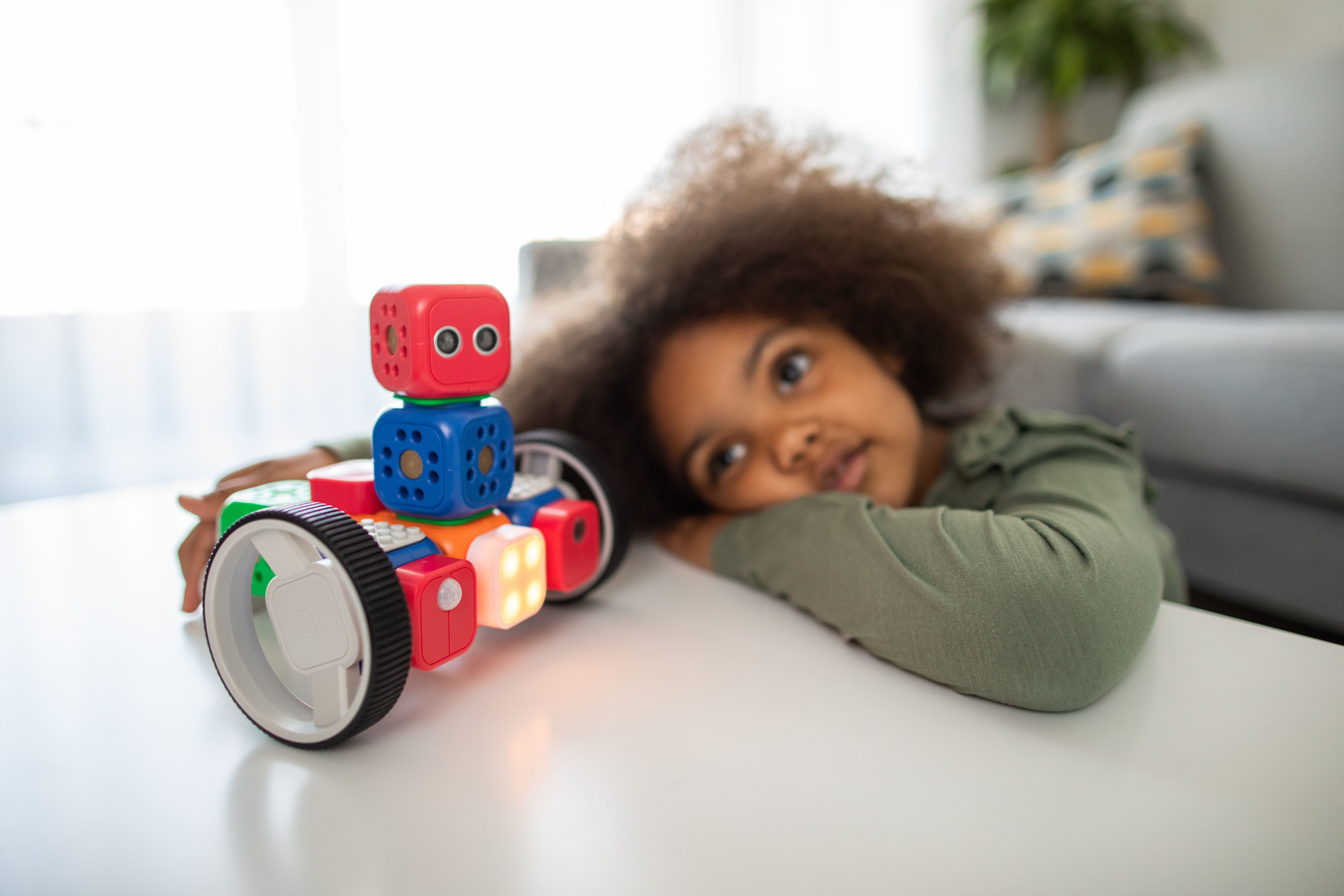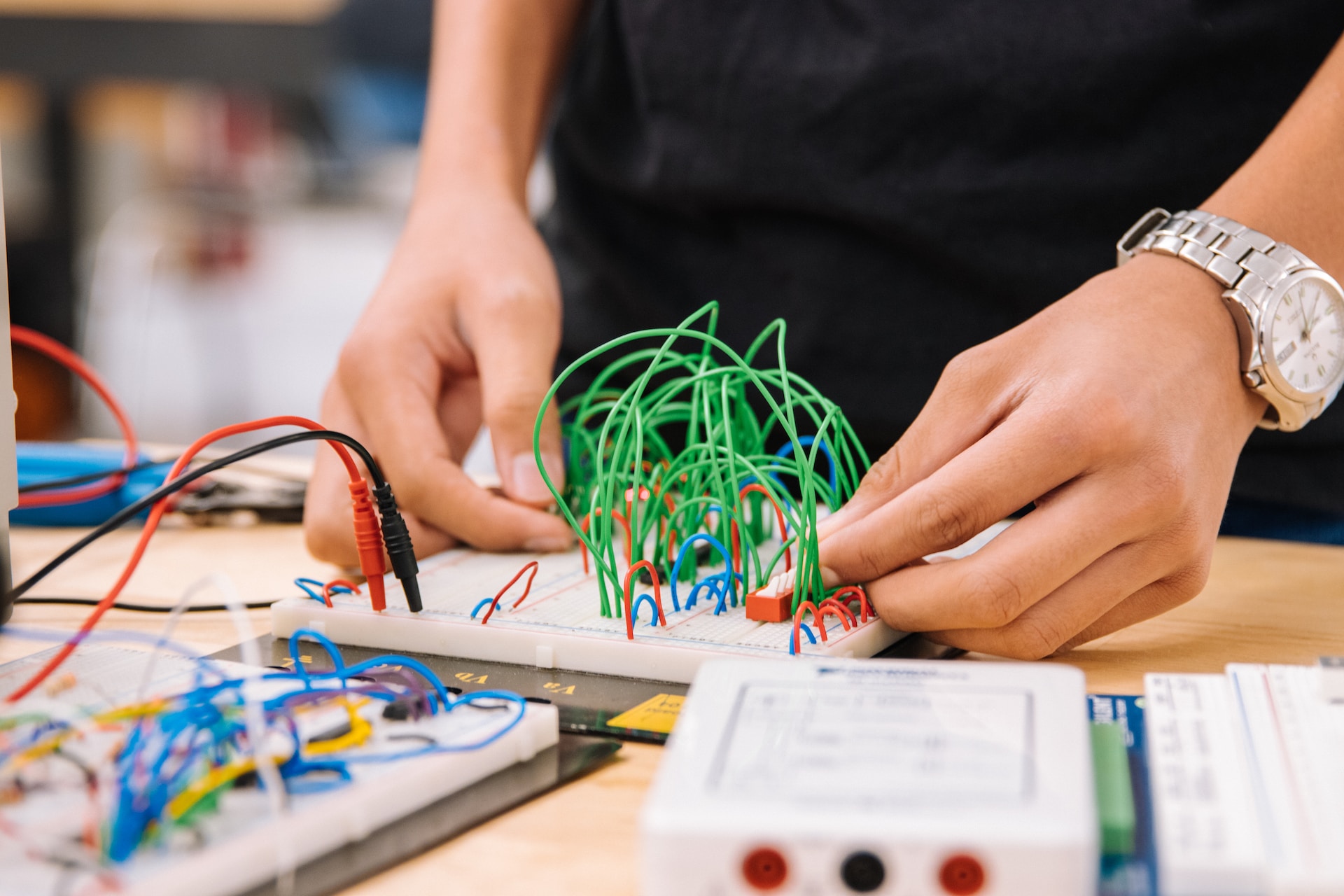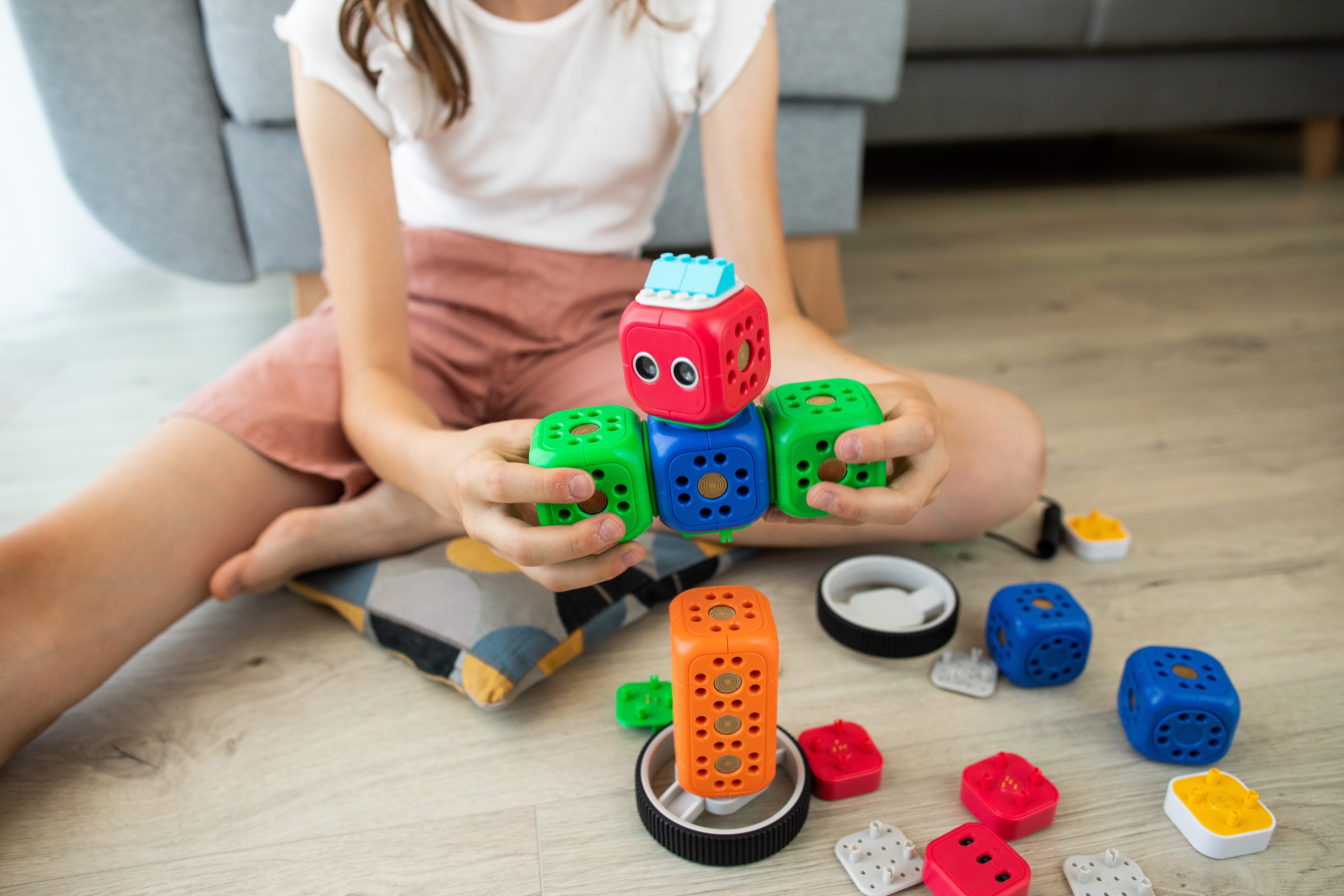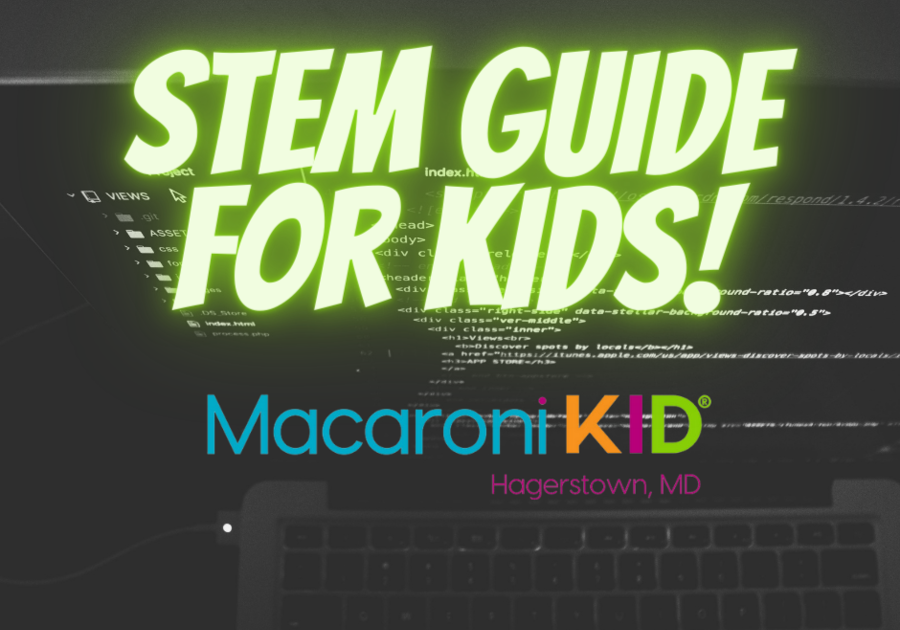The benefits of STEM activities for toddlers and kids and how it can help parents support their child's learning and development.
STEM (Science, Technology, Engineering, and Mathematics) education has become increasingly popular over the years, and for good reason. Parents and educators recognize the importance of early exposure to science, technology, engineering, and math (STEM) concepts. STEM activities can help young children develop critical thinking, problem-solving, and communication skills, and set them up for success in their future academic and professional careers. Early exposure to STEM activities has been shown to have numerous benefits for children, especially toddlers and kids. In this article, we will explore the benefits of STEM play for moms and provide some ideas for STEM activities that moms can do with their little ones.
 |
What is STEM?
STEM is an acronym for Science, Technology, Engineering, and Mathematics. It is an interdisciplinary approach to education that encourages hands-on learning and problem-solving skills. STEM education is essential in today's world, as it provides children with the skills they need to succeed in the 21st century.
Toddlers and young children are naturally curious and eager to explore the world around them. This makes them perfect candidates for STEM activities that encourage hands-on learning and experimentation. STEM activities can be as simple as building blocks or as complex as coding robots. Regardless of the activity, STEM play is a fun and engaging way for children to learn and develop their skills.
 |
Benefits of STEM Play for Toddlers and Kids
- Encourages Curiosity: STEM activities encourage children to ask questions and explore the world around them. This curiosity is an essential component of learning and sets the foundation for a lifelong love of learning.
- Develops Problem-Solving Skills: STEM play requires children to use critical thinking and problem-solving skills to solve challenges. These skills are essential for success in school and in life.
- Enhances Creativity: STEM activities provide children with the opportunity to explore their creativity and imagination. This creativity helps children to think outside the box and come up with unique solutions to problems.
- Builds Confidence: When children complete STEM activities, they feel a sense of accomplishment and pride in their work. This confidence helps to build self-esteem and encourages children to take on new challenges.
- Prepares for the Future: STEM education is essential in today's world, as many jobs require a strong foundation in science, technology, engineering, and mathematics. By exposing children to STEM activities at an early age, moms can help prepare their children for future success.
 |
Here are five STEM Activities for Toddlers and Young Kids:
- Building Blocks: Building blocks are an excellent STEM activity for toddlers and kids. Children can use blocks to create structures and learn about balance, gravity, and geometry.
- Sensory Bins: Sensory bins are a great way to introduce children to STEM concepts. Fill a bin with different materials such as sand, water, or rice, and provide tools for children to explore and experiment with.
- Science Experiments: Science experiments are an excellent way to introduce children to scientific concepts. Simple experiments such as mixing baking soda and vinegar or making a volcano can be fun and educational.
- Coding Games: Coding games are a fun way to introduce children to technology and programming. There are many free coding games available online that are designed specifically for children.
- Engineering Challenges: Engineering challenges such as building a bridge or creating a catapult are great STEM activities for kids
 |
Here are five STEM activities for older children:
- Build a Rube Goldberg Machine: A Rube Goldberg machine is a complex contraption that performs a simple task through a series of chain reactions. Have your child design and build their own Rube Goldberg machine using everyday items like dominos, marbles, and toy cars.
- Create a Solar Oven: With a few basic materials like a cardboard box, aluminum foil, and plastic wrap, your child can create a solar oven that uses the sun's energy to cook food. Have them experiment with different materials and designs to see how they affect the oven's temperature.
- Conduct a Science Experiment: There are countless science experiments that your child can do at home, from making homemade slime to building a volcano. Encourage them to research different experiments and choose one that interests them.
- Build a Robot: With a robotics kit, your child can build and program their own robot. They'll learn about electronics, programming, and mechanics as they assemble their creation and experiment with different functions.
- Design a 3D Model: With the help of 3D modeling software, your child can design their own objects to be printed on a 3D printer. They can experiment with different shapes and designs to see how they affect the object's strength and durability.
 |
There are many great STEM resources for kids that can help inspire and engage them in science, technology, engineering, and math. Here are a few:
- Khan Academy: Khan Academy offers free online courses and tutorials on a variety of STEM topics, from computer programming to biology. Their interactive lessons and quizzes make learning fun and engaging.
- Scratch: Scratch is a programming language and online community designed for kids. Children can use Scratch to create interactive stories, games, and animations, while also learning the basics of coding.
- NASA Kids' Club: NASA's Kids' Club offers games, activities, and videos that teach children about space and science. Kids can explore the solar system, learn about NASA missions, and even design their own spacecraft.
- Code.org: Code.org is a non-profit organization that aims to teach coding to every student in the world. They offer free coding lessons and activities for kids of all ages and skill levels.
- National Geographic Kids: National Geographic Kids offers a variety of STEM resources, including articles, videos, and quizzes about science, animals, and the environment. Kids can explore different topics and learn about the world around them.
- PBS Kids Lab: PBS Kids Lab offers a variety of STEM games and activities for children ages 2-8. Kids can learn about science, engineering, and math while playing games and solving puzzles.
- Science Buddies: Science Buddies is a non-profit organization that offers free STEM activities and resources for students, parents, and teachers. They have a library of over 1,000 science projects and experiments, as well as videos and articles that cover a wide range of STEM topics.
- The Lawrence Hall of Science: The Lawrence Hall of Science is a science museum in California that offers free online STEM activities for kids. They have hands-on experiments, videos, and interactive games that teach kids about science, engineering, and technology.
- STEM toys and kits: There are many STEM toys and kits available that can help children explore and learn about different STEM concepts. Some popular options include LEGO sets, robotics kits, and science experiment kits.
- STEM museums and centers: Many cities have STEM museums and centers that offer hands-on exhibits and activities for kids. Visiting these museums can be a great way to spark your child's interest in STEM and expose them to new ideas and concepts.
There are many free coding sites for children that are fun and easy to use. Here are five popular options:
- Scratch: Scratch is a free programming language and online community designed for kids. Children can use Scratch to create interactive stories, games, and animations, while also learning the basics of coding. The site is easy to use and offers a lot of resources to get started.
- Code.org: Code.org is a non-profit organization that aims to teach coding to every student in the world. They offer free coding lessons and activities for kids of all ages and skill levels. The site features games and puzzles that teach kids how to code using popular characters like Frozen's Anna and Elsa or Star Wars' R2-D2 and BB-8.
- Khan Academy: Khan Academy offers free online courses and tutorials on a variety of STEM topics, including computer programming. Their interactive lessons and quizzes make learning fun and engaging, and their programming courses cover topics like JavaScript, HTML/CSS, and SQL.
- Codeacademy: Codeacademy offers free coding lessons in multiple programming languages, including Python, Java, and Ruby. The site offers interactive lessons and quizzes that help kids learn how to code in a fun and engaging way.
- CodeCombat: CodeCombat is a free online game that teaches kids how to code while battling monsters and solving puzzles. The game offers a variety of levels and programming languages to choose from, so kids can learn at their own pace.
All of these sites are great options for kids who are interested in learning how to code, and they are all free to access.
 |
Here are some toddler toys that promote STEM (Science, Technology, Engineering, and Mathematics) and coding skills:
- Cubetto: Cubetto is a wooden robot that teaches young children the basics of programming. It comes with a board and coding blocks that allow children to map out a sequence of moves for Cubetto to follow.
- Code-a-pillar: Code-a-pillar is a caterpillar-like toy that introduces toddlers to sequencing and problem-solving. Children can rearrange the segments of the caterpillar to create different movement patterns.
- Botley the Coding Robot: Botley is a coding robot that teaches children basic coding concepts such as loops and conditional statements. It comes with a remote control that allows children to program Botley to move and navigate through obstacles.
- Tegu Blocks: Tegu Blocks are wooden blocks with magnets that promote creativity and problem-solving.
- Mega Blocks: Mega Blocks are plastic colorful blocks that connect much like Lego's but for smaller children.
- ROYBI: ROYBI is an AI-powered robot that interacts with children through voice recognition and provides educational content on various topics, such as language learning, STEAM (science, technology, engineering, arts, and math) subjects, and social-emotional learning.
 |
Here are some kids toys that promote STEM (Science, Technology, Engineering, and Mathematics) and coding skills:
- LEGO Education sets: LEGO Education offers a range of sets designed to teach kids about engineering, coding, robotics, and more.
- Magna-Tiles: Magna-Tiles are magnetic building blocks that promote creativity and spatial reasoning. Children can use the tiles to create 2D and 3D structures.
- K'NEX sets: K'NEX offers a variety of building sets that teach kids about physics and engineering.
- Snap Circuits: Snap Circuits allows kids to learn about electronics by building working circuits.
- Osmo Genius Kit: Osmo Genius Kit combines physical objects with digital technology to teach kids about math, spelling, and problem-solving.
- LittleBits: LittleBits is a modular electronics system that teaches kids about circuitry and engineering.
- KUBO: KUBO is a screen-free coding toy that teaches kids about coding through a physical robot.
- Tinkering Labs Electric Motors Catalyst: Tinkering Labs Electric Motors Catalyst allows kids to build and experiment with circuits and motors.
- Thames & Kosmos kits: Thames & Kosmos offers a range of science and engineering kits, including chemistry sets, physics sets, and more.
- Makey Makey: Makey Makey is a kit that allows kids to turn everyday objects into interactive devices, teaching them about circuits and programming.
- Miko 3: Deep learning AI enables Miko 3 to understand and respond to a kid's world, instilling feelings of companionship and social connection to help build confidence.
- Code & Go Robot Mouse: This robot mouse can be programmed using a simple visual language and can be used to teach teenagers about programming and robotics.
There are many STEM toys available in the market, so be sure to research and find the one that best suits your child's interests and learning style.
 |
Here are some teen toys that promote STEM (Science, Technology, Engineering, and Mathematics) and coding skills:
- Lego Mindstorms: This robotics kit allows teenagers to build and program their own robots using a combination of LEGO bricks, sensors, and motors.
- 3Doodler: This 3D printing pen allows teenagers to create three-dimensional objects by drawing with a special plastic filament.
- Kano Computer Kit: This kit allows teenagers to build their own computer and learn about coding and computer science in the process.
- Microscope: A good quality microscope can be an excellent STEM toy for teenagers who are interested in biology or chemistry.
- Raspberry Pi: This is a small, affordable computer that can be used to teach teenagers about programming, robotics, and electronics.
- Ozobot: This small robot can be programmed using a simple visual language and can be used to teach teenagers about programming and robotics.
- Circuit Scribe: This kit allows teenagers to draw their own circuits using conductive ink pens, and then see their creations come to life.
- Telescope: A good quality telescope can be an excellent STEM toy for teenagers who are interested in astronomy and space exploration.
There are also so many great STEM Subscription boxes for children to do a monthly STEM project:
- KiwiCo: offers a variety of STEM subscription boxes for kids of different age groups.
- Little Passports: has a Science Expeditions subscription box for kids aged 9 and up.
- Groovy Lab in a Box: offers hands-on STEM experiments for kids aged 8 and up.
- Tinker Crate: provides monthly STEM projects for kids aged 9 to 16.
- STEM Club: run by Amazon, it has a monthly STEM toy subscription for kids aged 3 to 13. * Currently Unavailable
- Green Kid Crafts: offers a monthly subscription box with STEM projects for kids aged 2 to 10.
- Bitsbox: provides monthly coding projects for kids aged 6 to 12.
- Creation Crate: offers monthly electronics projects for kids aged 12 and up.
- Club SciKidz: provides monthly STEM subscription boxes for kids aged 7 to 12.
- MEL Chemistry: provides monthly chemistry experiments for kids aged 10 and up.
Note: Some of these subscription boxes may have age ranges or specific interests, so be sure to check the details before purchasing.
In conclusion, STEM education provides children with a range of benefits that can help them succeed academically and in their future careers. By engaging in hands-on, inquiry-based learning activities, children can develop critical thinking, problem-solving, and collaboration skills that are essential for success in the 21st century. STEM also helps children to develop a deep understanding of scientific and mathematical concepts, as well as an appreciation for the real-world applications of these subjects. Furthermore, STEM education can inspire children to pursue careers in fields such as science, technology, engineering, and math, where there is a growing demand for skilled professionals. Overall, STEM education is essential for preparing children for the challenges and opportunities of the future, and for helping them to reach their full potential.



